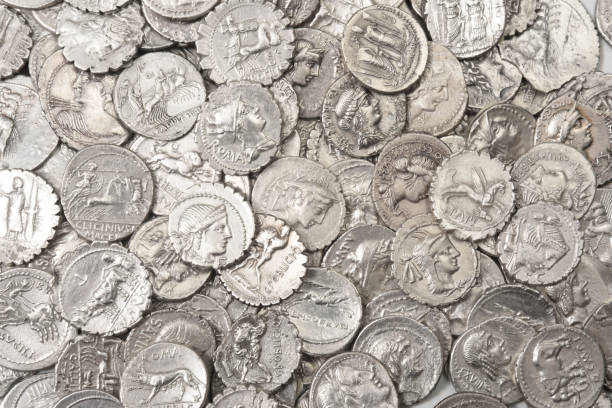Silver as currency has been a cornerstone of economic systems since ancient times, valued for its durability, intrinsic worth, and universal appeal. Long before the rise of the silver standard in the modern era, civilizations like Greece, Rome, and China harnessed silver’s unique properties to facilitate trade, build empires, and stabilize their economies. From the Athenian drachma to the Roman denarius and the silver exchanges of ancient China, this precious metal not only served as money but also symbolized wealth and power. This post explores how these early uses of silver as currency laid the foundation for its eventual prominence in global trade and monetary systems.

Greece: Silver as a Catalyst for Democracy and Trade
In ancient Greece, silver played a crucial role in fostering both economic prosperity and political innovation.
- The Laurium Mines: Located near Athens, these mines provided a significant source of silver that funded Athens’ rise as a powerful city-state. The wealth generated from silver enabled the construction of the Athenian navy, which was critical in the defeat of the Persian Empire.
- Coinage Innovation: Greece was one of the first civilizations to mint standardized silver coins, such as the Athenian drachma, which became widely accepted across the Mediterranean as a stable and trusted currency.
- Trade and Influence: Silver coins facilitated trade with neighboring regions, spreading Greek culture and economic influence far beyond its borders.
Rome: Silver and the Expansion of Empire
For the Roman Empire, silver was not just currency—it was a tool for unification and imperial dominance.
- The Denarius: Introduced around 211 BCE, the silver denarius became the backbone of Rome’s monetary system and a symbol of the empire’s strength. Its consistent weight and purity made it a trusted currency throughout Europe, North Africa, and the Near East.
- Military Funding: The Roman Empire relied on silver to pay soldiers, build infrastructure, and fund its vast territorial expansions. The control of silver mines, such as those in Hispania (modern Spain), was a strategic priority for maintaining imperial power.
- Economic Stability and Decline: Over time, the debasement of silver coins—reducing their silver content—led to inflation and economic instability, contributing to Rome’s eventual decline.
China: A Cultural and Economic Cornerstone
In ancient China, silver played a different but equally important role, particularly during the Tang and Song Dynasties.
- Trade and Tribute: Silver was used as a medium of exchange in trade with Central Asia and beyond, facilitating the exchange of silk, spices, and other luxury goods.
- Silver and Stability: During the Tang Dynasty, silver was often used alongside other forms of money, such as copper coins and silk. It was highly valued for its ability to retain purchasing power over long distances.
- Early Monetary Policy: The Song Dynasty experimented with paper money, but silver remained a critical part of the monetary system, particularly for large transactions and international trade.
The Universal Appeal of Silver in Pre-Modern Economies
Silver’s adoption as currency across different civilizations was driven by its unique qualities:
- Durability: Silver coins could withstand wear and tear, making them suitable for long-term use.
- Divisibility: It could be minted into coins of varying denominations, facilitating transactions of different scales.
- Intrinsic Value: Unlike other forms of money, silver carried inherent worth, which was recognized across cultures and regions.
- Global Acceptance: Even in ancient times, silver was a universal medium of exchange, linking distant economies through trade.
Laying the Foundations for the Silver Standard
The use of silver as currency in ancient Greece, Rome, and China set a historical precedent for its later dominance in global trade. These civilizations demonstrated the power of silver to unify economies, fund expansions, and facilitate commerce across borders. As we move into the 15th century, the lessons of these ancient economies would shape how silver was adopted and utilized during the age of exploration and beyond.
